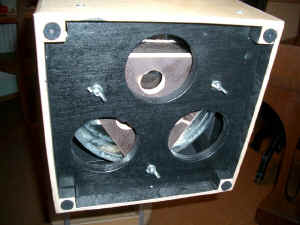
click on pictures to expand
|
The
mirror cell is a simple one with 3 supports. As the
diameter/thickness ratio is 6 to 1 this is sufficient. The basis is a
board of baltic birch plywood, 0,5 thick. Collimation will be made
with 3 butterfly nuts against springs. For faster cool-down I made some
holes in the board.
|
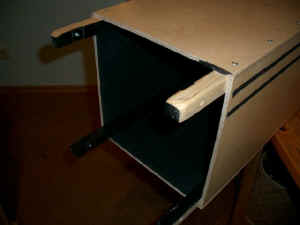
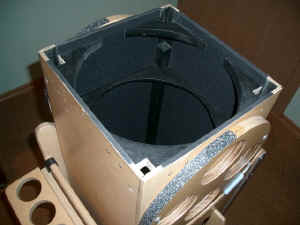
|
For transportation
purposes I decided to find a way for splitting the tube. The side boards
made of Ό plywood are glued and screwed on wooden square trusses
(0,8). On one piece the trusses stick out approx. 4, the trusses
can be stuck in the other piece and fixed with 4 butterfly bolts. The
result is a really stable connection, stable enough to keep collimation. |
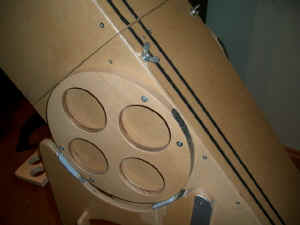 |
The diameter of the
altitude bearings is 10, this is not very much, but
this eases transportation, it is not necessary to unscrew them.
Ebony Star floats on Telfon. On the picture you can see the
butterfly bolts easily.
|
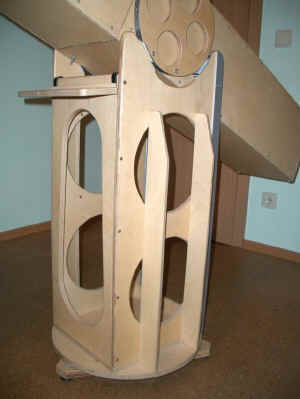 |
Due to the strong
construction the balance point is relatively high, this needs a high rocker
box. Long hours of sawing, rasping and filing were spent to built
this peace of art. Unfortunately it became instable. To make it
more stable I affixed some stilts like at a gothic cathedral.
|
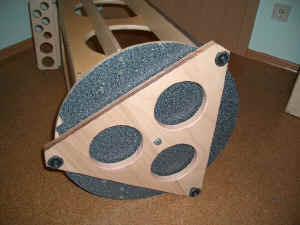 |
The diameter of the ground
board is approx. 16, not much for a rocker of this high. It is
based on a massive triangle made of 1 beech plywood. This is really
stable but also very heavy. My saw came in trouble with this kind of
wood.
|
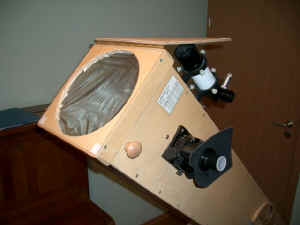 |
The focusser I
bought as the finder second hand. On this way I got the JMI
NGF-DX1 for half of the normal price. I built from plastics and black
cloth a light protector that is mounted directly at the focuser. Looking
over the eyepiece youre seeing only absolutely black, this help you
for another 0,2 magnitude when searching for faint fuzzies!
I
integrated a sun filter in the dust cover. While using it, the
cover shields the finder, no risk to burn your head by accident.
|
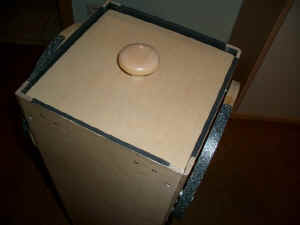 |
For transportation purposes I built an other cover. This cover the lower
half of the telescope. Ulrike mentioned it looks like the cover of a
toilet I found no reply at that moment. Nevertheless it is
practically and fits perfect. |